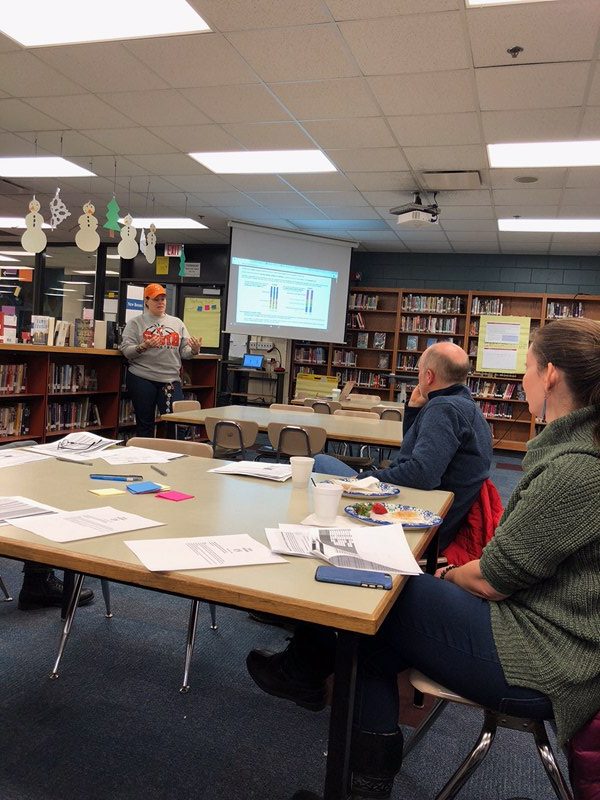Transition Plus yields mask the reality of Special Education graduation rates
More stories from Suad Adam
South High held a parent meeting on what needs have and have not been met with students receiving Special Education needs services and South High students as a whole. As well as breaking down demographics on how we as a community better our school as a whole. “The narrative of South HIgh School is not properly effective in what the Minnesota Department of Education is choosing to look at,” said Assistant Principal Mercedes Walker.
The Every Student Succeeds Act (ESSA), is a law that was passed in 2015 to govern the public education system grades K-12. The ESSA is closely associated with the No Child Left Behind Act passed under the Bush administration. With ESSA, every school has a set of standards they are expected to be achieving. According to the Minneapolis Public Schools website, “ESSA requires states to develop a data-driven system for holding schools and districts accountable for providing a fair, equitable, and high-quality education to all students.”
South math teacher Stephanie Woldum said in an email interview: “ESSA affects students through the identification of schools that are not meeting federally mandated improvements in graduation rates, test scores and more. If a school is identified as needing support, the State Education Department provides guidance on improving student outcomes.”
Students receiving Special Education need services have a right to an education until they are 21 years old. Many students that still need to work on their job skills or need more support to go to college can access services until they’re 21 through Transition Plus.
Transition Plus is a program designed for special needs students. It’s arranged to continue the education they may need to adapt from being a high school student to adulthood. Conveniently, Transition Plus is on the same block as South High School.
“If we got to count the students that are choosing to go to Transition Plus into our graduation rates, we could be graduating [around] 92% of all students receiving Special Education services. Transition Plus helps with housing, job skills, and college support. However, based on the way the system is setup in the state of Minnesota, if students don’t physically take their diploma, they don’t technically graduate,” said Assistant Principal Mercedes Walker.
Walker continued to point out that even though the district doesn’t account for it, “we’re graduating 92% of our kids…. that’s what says to me South High School is doing its job. We are making sure all students are passing their classes through accommodations, modifications, [through] different levels of support classes.”
“South is identified as not meeting federal standards in graduation rates for our Special Ed. students. As a result of our identification for this category we are required to complete a Comprehensive Needs Assessment (CNA). This process is an opportunity for South to engage staff, students, parents/guardians, and stakeholders in identifying areas of need for our school,” said Woldum.
“South is in the 1st year of a 3 year process of completing the CNA. During this first year we will be working to understand the root causes of the 4 areas of need we have identified. We will also be developing strategies for addressing these areas of need like additional professional development for staff and possibly additional staff to work with students in addressing areas of need,” she explained.
According to the Colorado Department of Education [CDE] website, the “comprehensive needs assessment is a process that is used to identify needs and performance challenges in a school or district, determine their root causes, and set priorities for future action. Schools and districts should use the comprehensive needs assessment to inform improvement planning and budgeting.”
Walker explained how South is affected by the CNA: “South High is at 67% graduation rate for students receiving Special Education services…Based on the comprehensive support model, South High has been instructed by the state of Minnesota to do a Comprehensive Needs Assessment.”
The CNA receives input from the Instructional Leadership Team (ILT). There is a representative within each department of education at South. At least one staff member from the english department, from the special education department, one counselor, etc. This way, there are more voices and opinions in consideration as a whole.
“We initially started look at all of the different data at South past and present, to see what are some trends. We asked staff what they wanted to focus on to help add in our schools improvement plan goals, explaining we as ILT let them look at the data and then make comments and narrow down what South High staff thought was important,” counselor Kelsey Clark said.
“We narrowed it down to sub-categories. We then we had them vote… At our last data retreat, we dove into what the root cause of our feedback may come from,” Clark continued. “What they ranked on what may be the most important thing for South at the moment and what what change can we do at South to improve on this.”











